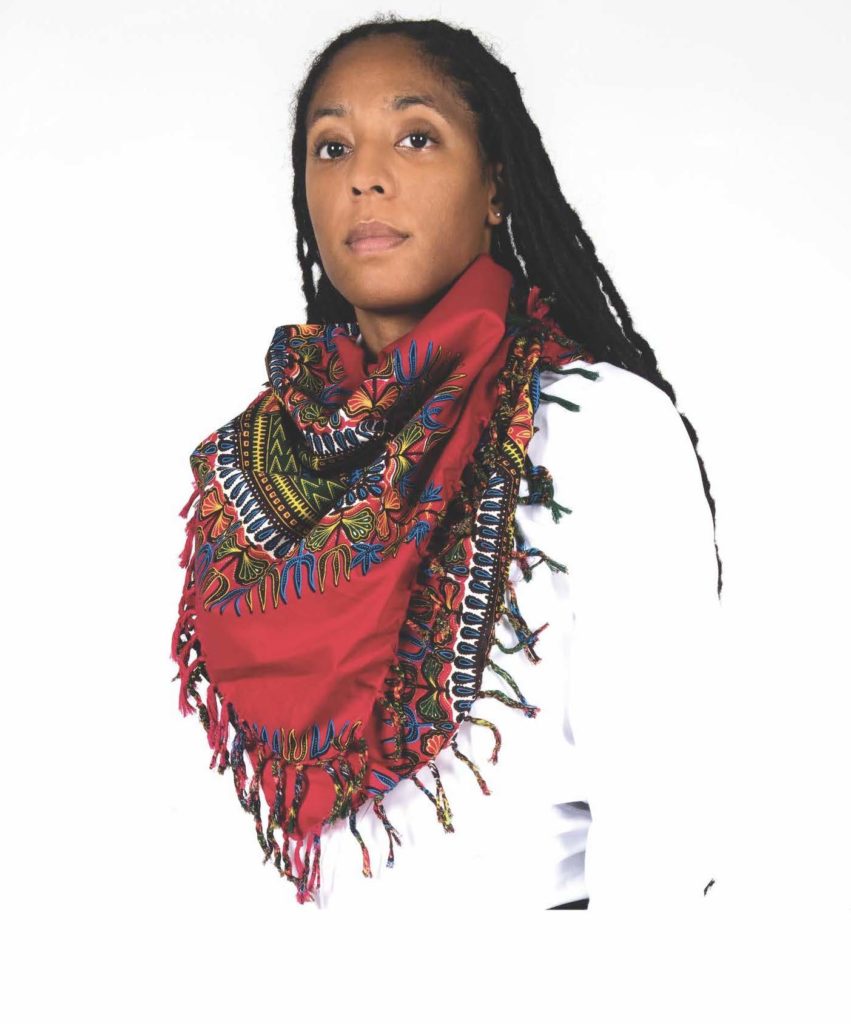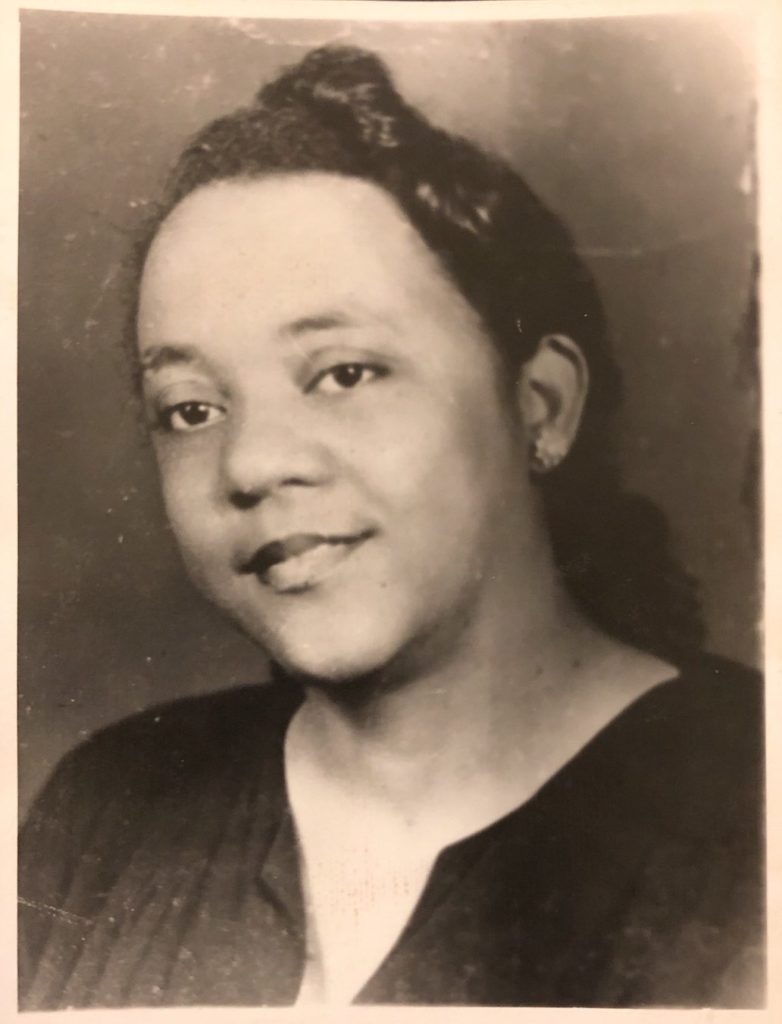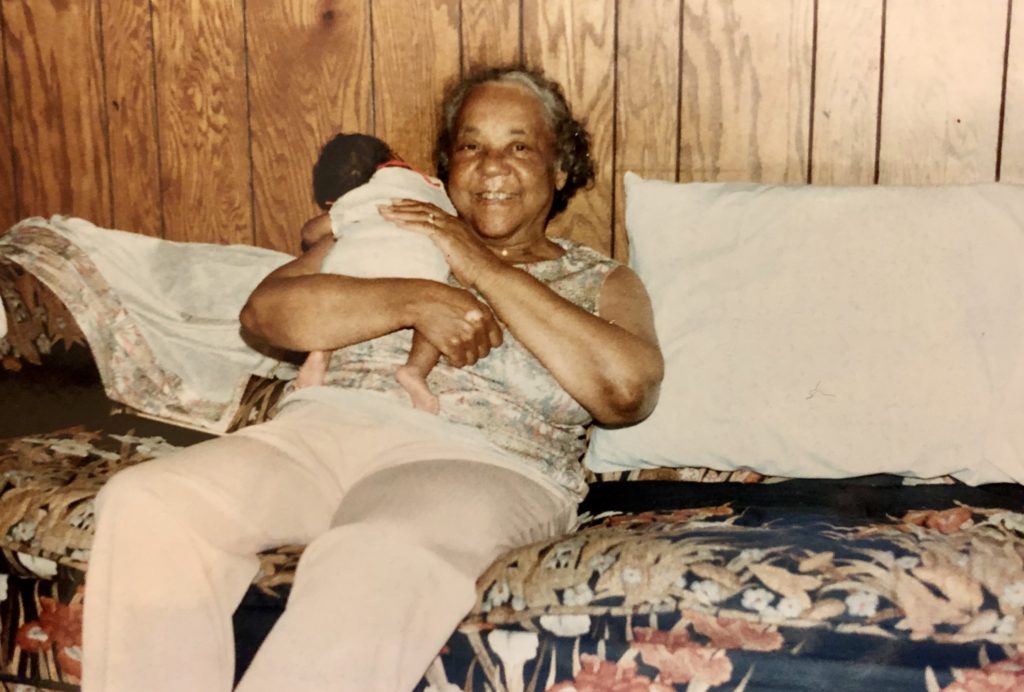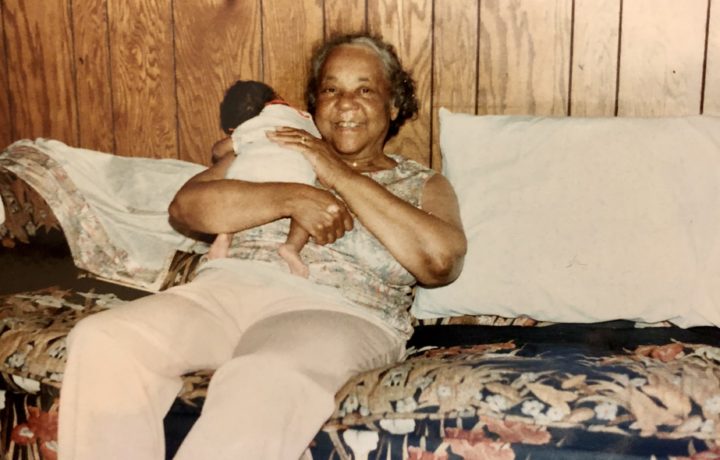“No, no. We’re going to donate that.” Aunt Duchess sharply pointed at a pile of dust-covered yarn in a box marked “Yard Sale,” and I reluctantly gave up my protest. I come from a lineage of hoarders. This is an amusing truth I’ve come to accept and manage in my daily life. In the summer of 2016, I began helping my aunt undertake an almost-superhuman task: clear out a hoard almost eighty years in the making.
I am sitting in my grandmother’s garden. What I thought was cleaning was actually tilling a forgotten field. This ranch-style home, filled with a mixture of antique and midcentury-modern furniture, is located in a historically Black neighborhood that will, I hope, withstand the onslaught of gentrification creeping closer with every “For Sale” sign. Oma was an artist, and this home was built to her specifications. She avoided the danger of becoming an artist with no art form by teaching home economics at the Tennessee School for the Blind. This home, her garden, is filled with arts and crafts that she created for her students, her family, and, most importantly, herself.

Next door to many of the looming signs in Nashville’s handful of predominantly Black communities is a home inhabited by a Black Baby Boomer, very often the child of migrants to the city from surrounding plantations and towns in Tennessee, Mississippi, and, like Oma, small towns in Alabama. These strivers built the physical and cultural infrastructure of Black Nashville, populated the city’s Historically Black Colleges and Universities, agitated for civil rights, and laid a foundation for the future of their communities. However, the survivors of white flight did not predict the ravages of gentrification. Nashville has recently emerged as one of the South’s most attractive destinations for newcomers with enough privilege to dislodge current residents struggling to hold on to the remnants of someone’s American Dream. This commercial and residential resurgence comes at the expense of the descendants of women like my grandmother, who spent a lifetime cultivating fields for their kin to take root and bloom.

I never had the pleasure of knowing my paternal grandmother. Oma was named after Esther, one of the most beautiful women in the Bible. Family photos indicate that she grew into a woman worthy of her name. She became what she ought to be and lived as she was taught a Black woman was supposed to. This socially constructed and self-imposed modesty also contributed to her obscurity.
I spent that entire summer plowing through decades of memories packed into dusty boxes and neglected corners. These are the places where I found my grandmother. Each creased paper, curled photo, and dusty relic reflected a lifetime of memories. These were Oma’s forgotten moments finding the light. I’d found evidence of things that hurt her—things she carried to the grave and beyond. She also held onto things that healed her, and these things existed alongside each other. This is what archives can do for Black people. They often hurt and heal us. Sometimes the healing is not equal to the hurt, and that chasm is a space for reflection and imagination. It is also sacred ground for meditation.

The Biblical Esther was loving, brave, and discerning—three qualities I’d unknowingly waited my entire life to hear spoken of Oma. Instead, I was told she was a hoarder. I was never told she was a collector, historian, or archivist. According to all my mother’s stories, Oma cradled me, pressed me gently into her large breasts, kissed the top of my infant-slick, curly head, and sang me to sleep in her gorgeous soprano voice. Now I found myself sitting face-to-face with the woman she was before my parents met. Estherwas not her sister Hazel, a woman who appears in the newspaper for surviving a shootout with an armed robber at her store. Instead, Oma’s home archive contains the unfired bullets of a beautiful yet constrained life: wife, mother, schoolteacher, clubwoman.
Oma left no journal. For a woman who kept meticulous notes, particularly regarding club business and household finances, she recorded few details of her inner thoughts. As her granddaughter, I am particularly disheartened by this. Like other well-known Black Tennesseans, including Mary Church Terrell, Alberta Hunter, and J. Frankie Pierce, Oma endeavored to protect her interior life in a way that prevented any suspicion of impropriety. Evelyn Brooks Higginbotham’s theorizing about the politics of respectability and Darlene Clark Hine’s culture of dissemblance have been instrumental to my slowly growing historiographical understanding of my paternal grandmother, whose interior life remains a mystery to me. Of course Oma had secrets. Black women deserve a private life, especially in a world that considers their bodies public property. Unfortunately, Oma’s shield became an invisibility cloak. She became someone who existed only in pictures and other people’s recollections while her own collections remained hidden in plain sight. However, if Marisa Fuentes, Saidiya Hartman, and Jessica Marie Johnson have taught me anything, it is that we should reanimate the ashes of neglected and destroyed archives. I can imagine another Oma. So I do.
As the descendants of people who most often first appear in an archive as property, many Black people have an ambiguous if not outright fraught relationship to the idea of archives. For Black Southerners living in the wake of slavery, Jim Crow, and their neighbors’ gleeful celebration of having won Reconstruction, the archives often take the form of literal monuments to the horrors of enslavement. Fortunately, historians, particularly Black historians, have worked hard to reorient the relationship between Black people, archives, and sites of public memory such as plantations. The work of Black women curators like Ashley Bouknight and Kenvi Phillips taught me how to collect and preserve Oma’s treasures, but I am still learning how to interpret them. As Black women working in fields that remain dominated by white scholars, Bouknight and Phillips are important bridges between Black communities and public archives.
Black women in archives are more than property, visitors, or employees. We are stakeholders. The stakes are even higher when the archive resides in our home. As Alice Walker reminds us of the necessity of discovering our mothers’ gardens, the journey through Oma’s collection teaches me that home archives deserve a similar scholarly reverence that we confer upon oral histories in Black communities. Oma’s garden is an example of how a renewed emphasis on the forgotten treasures in our midst is a call to care more deeply for memorabilia that are often discarded after the passing of a loved one.
Excavating my own familial history has prepared me to think with and through the interiority of other Black women’s lives in my research. It trains me to treat them with the grace and care that these private, complicated matriarchs, like Oma, deserve. This is necessary work. My theorizing takes place within Oma’s garden because it is a visceral, literal manifestation of the idea of an archive that haunts my current research. Sifting through and sitting in her garden has reinvigorated my own research and writing process. The way forward is through the garden, thorns and all.
K. T. Ewing is an Assistant Professor of History at Tennessee State University. Her current book project, Remember My Name: Alberta Hunter and the Two-Faced Archive, examines the life of Alberta Hunter, a twentieth-century blues and cabaret singer from Memphis, Tennessee. Follow her on Twitter @KTEwing901.
